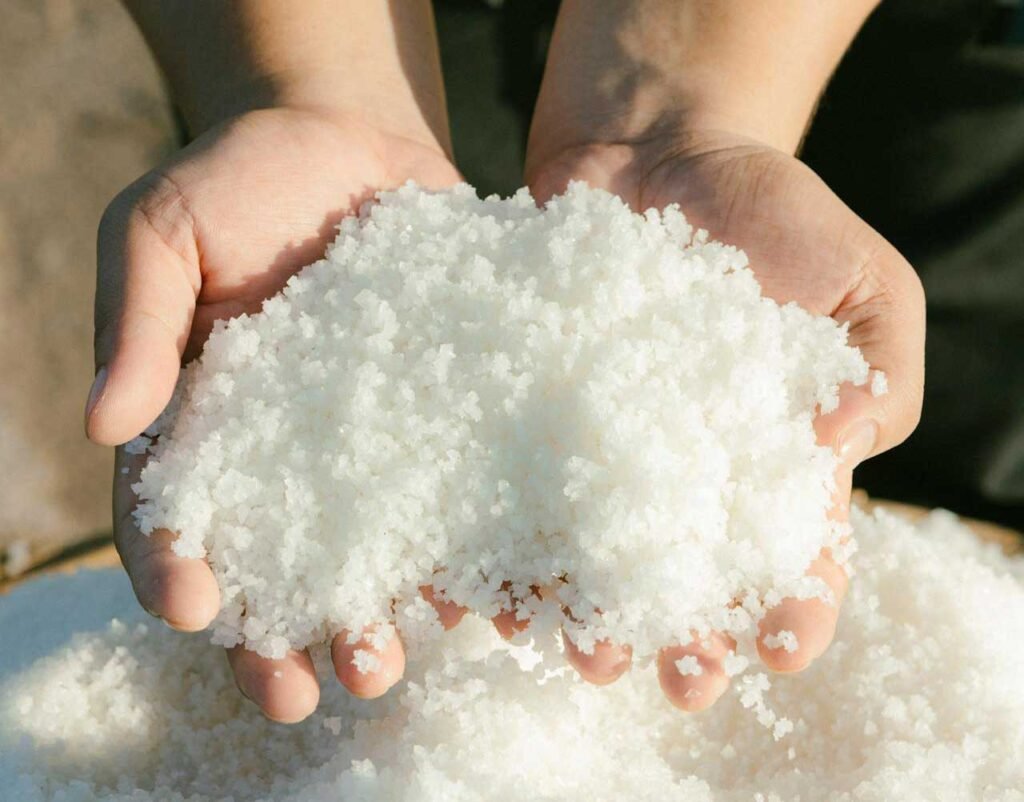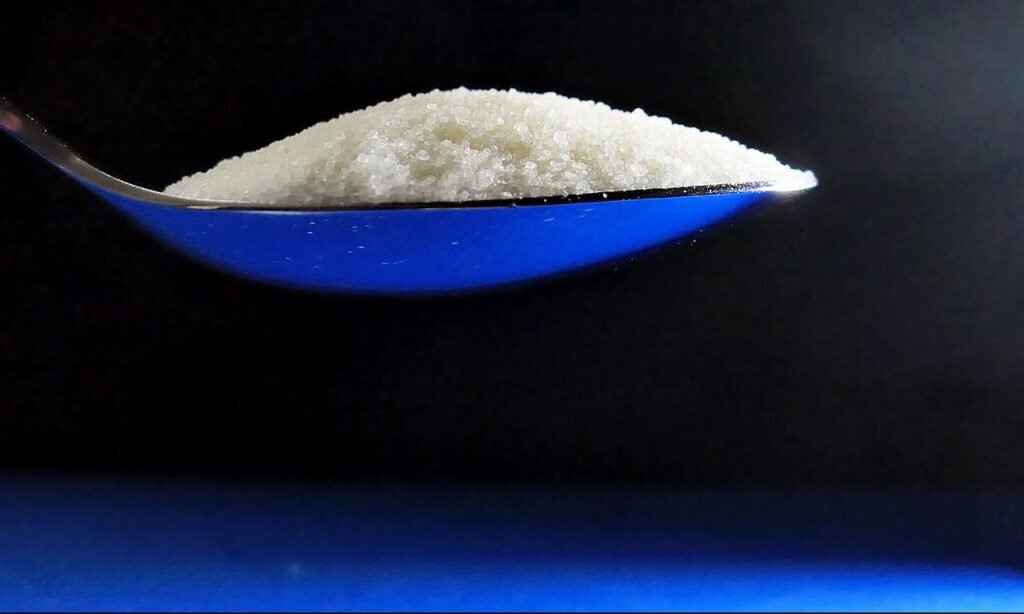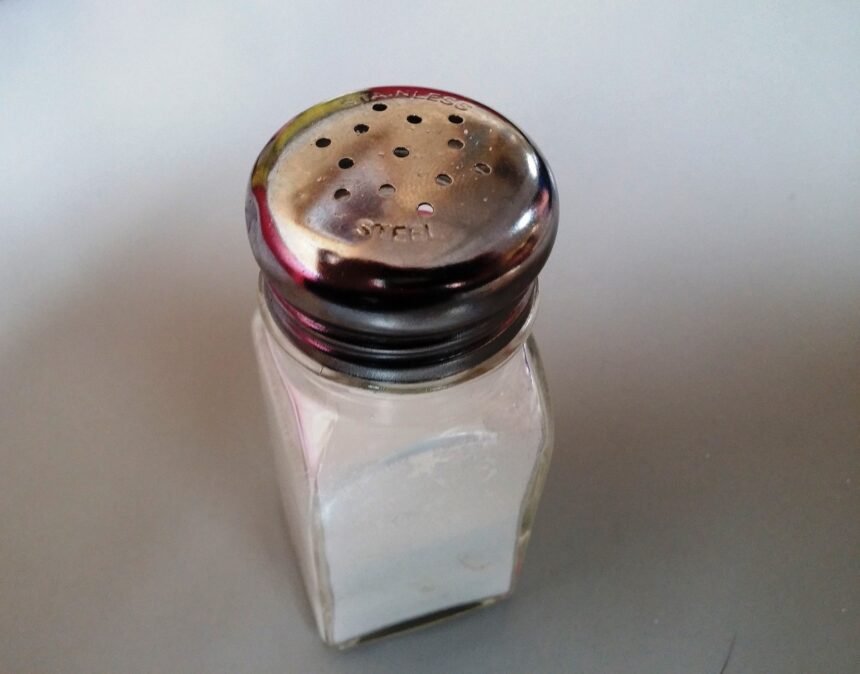Sodium caseinate, a versatile milk protein derivative, has found its way into numerous food products and supplements. This comprehensive article will delve into the world of sodium caseinate, exploring its benefits and potential side effects. We’ll examine its uses, nutritional value, and impact on various aspects of health and food production.
1. What is Sodium Caseinate? Understanding the Basics
Sodium caseinate is a protein derived from casein, the primary protein found in milk. It’s created through a process that involves separating casein from milk and then treating it with sodium hydroxide to make it more soluble. This results in a white, powdery substance that’s widely used in the food industry as an emulsifier, stabilizer, and protein supplement.
The chemical composition of sodium caseinate makes it highly versatile. It’s soluble in water, which allows it to be easily incorporated into various food products. This solubility, combined with its ability to form stable emulsions, makes sodium caseinate a valuable ingredient in many processed foods.
Some key characteristics of sodium caseinate include:
- High protein content (typically around 90%)
- Low lactose content
- Excellent emulsifying properties
- Good water binding capacity
- Stable at high temperatures
Sodium caseinate is commonly found in:
- Coffee creamers
- Protein shakes and bars
- Processed cheese products
- Meat products
- Baked goods
- Infant formulas
It’s important to note that while sodium caseinate is derived from milk, it’s often considered lactose-free due to the processing it undergoes. However, individuals with severe milk allergies should still exercise caution as it does contain milk proteins.
Understanding the basic properties and uses of sodium caseinate is crucial for appreciating its benefits and potential drawbacks. As we delve deeper into this article, we’ll explore how these characteristics translate into various advantages and possible side effects for consumers and the food industry alike.
2. Nutritional Profile of Sodium Caseinate: A Protein Powerhouse
Sodium caseinate is primarily valued for its high protein content, making it a nutritional powerhouse in many food products. Let’s break down the nutritional profile of sodium caseinate and explore what it brings to the table.
Protein Content:
Sodium caseinate typically contains about 90-95% protein by weight. This high protein concentration makes it an excellent source of essential amino acids, the building blocks of protein that our bodies need for various functions.
Amino Acid Profile:
The protein in sodium caseinate is considered a complete protein, meaning it contains all nine essential amino acids in adequate proportions. Some key amino acids found in sodium caseinate include:
- Glutamic acid
- Proline
- Leucine
- Lysine
- Valine
These amino acids play crucial roles in muscle building, tissue repair, and overall body function.
Calorie Content:
Sodium caseinate is relatively low in calories, with about 4 calories per gram of protein. This makes it an attractive option for those looking to increase their protein intake without significantly increasing their calorie consumption.
Fat and Carbohydrate Content:
Sodium caseinate is very low in fat and carbohydrates. Most of the fat and lactose (milk sugar) are removed during the production process, resulting in a nearly pure protein product.
Mineral Content:
As the name suggests, sodium caseinate does contain sodium. The sodium content can vary depending on the specific product, but it’s generally not high enough to be a concern for most people. However, individuals on sodium-restricted diets should be aware of this.
Vitamins:
While not a significant source of vitamins, sodium caseinate may retain small amounts of B vitamins naturally present in milk.
Understanding the nutritional profile of sodium caseinate is crucial for appreciating its benefits in various applications. Its high protein content and complete amino acid profile make it a valuable ingredient in protein supplements and fortified foods. However, as with any nutrient, it’s important to consider sodium caseinate as part of a balanced diet rather than a standalone solution for nutritional needs.
3. Benefits of Sodium Caseinate: More Than Just a Protein Source
Sodium caseinate offers a range of benefits that extend beyond its high protein content. Let’s explore some of the key advantages of this versatile ingredient.
- Muscle Building and Recovery:
The high-quality protein in sodium caseinate provides essential amino acids necessary for muscle growth and repair. Its slow-digesting nature makes it particularly useful for providing a steady supply of amino acids over time, which can be beneficial for muscle recovery during sleep or between meals. - Weight Management:
Protein is known for its satiating effect, helping to keep you feeling full for longer. Sodium caseinate, as a concentrated protein source, can contribute to feelings of fullness and potentially aid in weight management by reducing overall calorie intake. - Improved Nutritional Profile of Foods:
Food manufacturers often use sodium caseinate to boost the protein content of various products. This can be particularly beneficial in creating more nutritionally balanced convenience foods or in fortifying products for specific dietary needs. - Emulsification and Texture Enhancement:
In food production, sodium caseinate acts as an excellent emulsifier. It helps to blend ingredients that don’t typically mix well, such as oil and water. This property is crucial in creating stable emulsions in products like coffee creamers and processed cheeses. - Extended Shelf Life:
The emulsifying and stabilizing properties of sodium caseinate can help extend the shelf life of certain food products by preventing separation and maintaining consistent texture over time. - Foaming Agent:
In some applications, sodium caseinate can act as a foaming agent, creating a light and airy texture in products like whipped toppings. - Nutritional Support for Special Diets:
Sodium caseinate can be a valuable protein source for individuals with specific dietary needs, such as those requiring high-protein diets for medical reasons or athletes looking to increase their protein intake. - Potential Antioxidant Properties:
Some research suggests that casein proteins, including sodium caseinate, may have antioxidant properties, potentially offering protection against oxidative stress in the body. - Calcium Absorption:
While sodium caseinate itself is not a significant source of calcium, some studies indicate that casein proteins may enhance calcium absorption in the body. - Versatility in Food Applications:
The wide range of functional properties of sodium caseinate makes it a versatile ingredient in food production, allowing for innovation in product development and improvement of existing food products.
While these benefits make sodium caseinate an attractive ingredient for both consumers and food manufacturers, it’s important to consider them in the context of a balanced diet and individual health needs. As we’ll explore in later sections, sodium caseinate may not be suitable for everyone, and its use should be considered alongside potential side effects and individual dietary requirements.

4. Sodium Caseinate in Food Industry: Applications and Innovations
Sodium caseinate has become a staple ingredient in the food industry, thanks to its versatile properties and nutritional benefits. Let’s explore how this milk protein derivative is used across various food applications and the innovations it has sparked.
- Dairy Products and Alternatives:
In the dairy industry, sodium caseinate is often used to improve the texture and nutritional profile of products. It’s commonly found in:
- Processed cheese: Enhances meltability and texture
- Yogurt: Improves thickness and creaminess
- Dairy-free alternatives: Provides milk-like properties in non-dairy creamers and cheese alternatives
- Meat Products:
Sodium caseinate plays a crucial role in meat processing:
- Enhances water retention, improving juiciness
- Acts as a binder, improving texture in products like sausages and deli meats
- Increases protein content in meat analogues and vegetarian meat substitutes
- Bakery and Confectionery:
In baked goods and confections, sodium caseinate serves multiple purposes:
- Improves texture and mouthfeel
- Enhances browning in baked products
- Acts as an emulsifier in cream fillings and frostings
- Beverages:
Sodium caseinate is widely used in various beverages:
- Coffee creamers: Provides creaminess and prevents separation
- Protein shakes: Boosts protein content and improves texture
- Meal replacement drinks: Adds nutritional value and improves mouthfeel
- Nutritional Supplements:
In the world of nutritional supplements, sodium caseinate is valued for:
- Protein bars: Enhances protein content and improves texture
- Powdered supplements: Provides a high-quality protein source
- Infant Formula:
Sodium caseinate is sometimes used in infant formulas to:
- Mimic the protein composition of human milk
- Provide essential amino acids for infant growth and development
- Functional Foods:
The food industry is increasingly using sodium caseinate in functional foods:
- Fortified snacks: Boosts protein content in chips, crackers, and other snack foods
- Sports nutrition products: Provides slow-releasing protein for sustained energy
Innovations in Sodium Caseinate Applications:
- Microencapsulation: Sodium caseinate is being explored for its potential in microencapsulation technology, which could lead to improved delivery of nutrients or flavours in food products.
- Edible Films and Coatings: Research is ongoing into using sodium caseinate to create edible films and coatings for food preservation.
- Nanotechnology: Some studies are investigating the use of sodium caseinate nanoparticles for targeted nutrient delivery in functional foods.
As the food industry continues to evolve, sodium caseinate remains a key player in product development and innovation. Its multifunctional properties make it a valuable ingredient for improving texture, nutrition, and shelf life across a wide range of food products. However, as with any food additive, its use must be balanced with consumer preferences and potential health considerations, which we’ll explore in the following sections.
5. Potential Side Effects of Sodium Caseinate: What You Need to Know
While sodium caseinate offers numerous benefits, it’s important to be aware of potential side effects and considerations associated with its consumption. Let’s explore some of the possible drawbacks and who might need to exercise caution when consuming products containing sodium caseinate.
- Allergic Reactions:
The most significant concern with sodium caseinate is its potential to trigger allergic reactions in individuals with milk allergies. Despite being highly processed, sodium caseinate is derived from milk and contains milk proteins. Symptoms of an allergic reaction may include:
- Hives or skin rash
- Digestive issues (nausea, vomiting, diarrhea)
- Respiratory problems (wheezing, coughing)
- In severe cases, anaphylaxis
- Lactose Intolerance:
While sodium caseinate is generally considered lactose-free due to the processing it undergoes, some individuals with severe lactose intolerance may still experience symptoms when consuming products containing this ingredient. - Digestive Discomfort:
Some people may experience digestive issues when consuming high amounts of protein, including sodium caseinate. This can lead to:
- Bloating
- Gas
- Stomach cramps
- Sodium Content:
As the name suggests, sodium caseinate contains sodium. While the amount is generally not significant enough to be a concern for most people, individuals on sodium-restricted diets should be aware of this and monitor their intake accordingly. - Potential for Overconsumption:
With the widespread use of sodium caseinate in processed foods and supplements, there’s a potential for overconsumption of protein. While protein is essential for health, excessive intake may lead to:
- Kidney strain in individuals with pre-existing kidney issues
- Potential imbalance in nutrient intake if protein sources displace other important foods in the diet
- Interactions with Medications:
In some cases, high protein intake may interact with certain medications. For example, it may affect the absorption of some antibiotics or levodopa (used to treat Parkinson’s disease). - Environmental and Ethical Concerns:
While not a direct side effect, some individuals may have concerns about the environmental impact of dairy-derived products or may avoid sodium caseinate for ethical reasons related to animal welfare. - Potential for Contamination:
As with any food additive, there’s a small risk of contamination during the production process. However, strict quality control measures in the food industry minimize this risk.
It’s important to note that for most people, sodium caseinate is safe when consumed as part of a balanced diet. However, individuals with milk allergies, severe lactose intolerance, or specific health conditions should exercise caution and consult with a healthcare professional if they have concerns.
As always, moderation is key. While sodium caseinate can be a valuable source of protein and a useful food additive, it should be consumed as part of a varied diet that includes a range of different protein sources and nutrients.
6. Sodium Caseinate vs. Other Protein Sources: A Comparative Analysis
To fully appreciate the role of sodium caseinate in nutrition and food production, it’s helpful to compare it with other common protein sources. This comparison will highlight the unique properties of sodium caseinate and help you understand when it might be preferred over other options.
- Sodium Caseinate vs. Whey Protein:
Both derived from milk, these proteins have different properties:
- Digestion Rate: Sodium caseinate is slower-digesting, while whey is fast-absorbing
- Amino Acid Profile: Both are complete proteins, but whey is higher in branched-chain amino acids (BCAAs)
- Solubility: Sodium caseinate is more soluble in acidic conditions
- Use in Foods: Sodium caseinate is better for emulsification, while whey is often preferred in clear beverages
- Sodium Caseinate vs. Soy Protein:
- Origin: Sodium caseinate is animal-based, while soy protein is plant-based
- Allergenicity: Both are common allergens, but affect different populations
- Functionality: Sodium caseinate generally has better emulsifying properties
- Nutritional Profile: Both are complete proteins, but soy also provides fiber and some phytonutrients
- Sodium Caseinate vs. Pea Protein:
- Source: Animal vs. plant-based
- Amino Acid Profile: Sodium caseinate is more complete, while pea protein is lower in methionine
- Digestibility: Sodium caseinate typically has higher digestibility
- Allergenicity: Pea protein is less allergenic for most populations
- Sodium Caseinate vs. Egg Protein:
- Functionality: Sodium caseinate is better for emulsification, while egg protein excels in foaming
- Nutritional Value: Both are high-quality, complete proteins
- Allergenicity: Egg protein is one of the most common allergens
- Sodium Caseinate in Specific Applications:
- Coffee Creamers: Preferred over other proteins due to its excellent solubility and emulsifying properties
- Meat Products: Chosen for its water-binding and emulsifying capabilities
- Protein Bars: Often used in combination with other proteins for optimal texture and nutritional profile
Factors to Consider When Choosing:
- Dietary Restrictions: Vegan, vegetarian, or specific allergies
- Functional Requirements: Emulsification, foaming, gelling, etc.
- Nutritional Goals: Specific amino acid profiles or digestion rates
- Taste and Texture: Impact on final product characteristics
- Cost: Sodium caseinate is often more economical than some alternatives
While sodium caseinate offers unique benefits, particularly in food production, the choice of protein source should be based on individual needs, dietary preferences, and specific application requirements. Each protein source has its strengths, and often a combination of different proteins can provide optimal results in both nutrition and food production.
Certainly! I’ll continue with the “Regulatory Status and Safety of Sodium Caseinate” section and then move on to complete the article.
7. Regulatory Status and Safety of Sodium Caseinate: What the Experts Say
- Toxicological Studies:
- Extensive toxicological studies have been conducted on casein and its derivatives, including sodium caseinate.
- No significant adverse effects have been reported when consumed in normal dietary amounts.
- Nutritional Safety:
- Experts generally agree that sodium caseinate is safe and beneficial as a protein source when consumed as part of a balanced diet.
- However, they caution against excessive protein intake, which applies to all protein sources, not just sodium caseinate.
- Environmental Impact:
- While not directly related to human safety, some experts have raised concerns about the environmental impact of dairy-derived ingredients.
- This has led to increased research into plant-based alternatives.
Expert Opinions:
- Nutritionists:
- Many nutritionists recognize sodium caseinate as a high-quality protein source, particularly valuable for its slow-digesting properties.
- They often recommend it as part of a varied protein intake, especially for athletes or individuals with higher protein needs.
- Food Scientists:
- Food science experts value sodium caseinate for its functional properties in food production.
- They emphasize its importance in creating stable emulsions and improving texture in various food products.
- Allergists:
- Allergy specialists stress the importance of clear labeling for products containing sodium caseinate to protect individuals with milk allergies.
- They note that while some milk-allergic individuals may tolerate sodium caseinate, it should still be approached with caution.
- Regulatory Bodies:
- Regulatory agencies worldwide have deemed sodium caseinate safe for consumption when used according to good manufacturing practices.
- They continue to monitor research and update guidelines as necessary.
Ongoing Research:
- Studies are ongoing to further understand the long-term effects of sodium caseinate consumption, particularly in specific populations such as the elderly or individuals with certain health conditions.
- Research is also being conducted on potential new applications of sodium caseinate in food technology and nutrition.
While the overall consensus among experts is that sodium caseinate is safe for most people when consumed as part of a balanced diet, it’s important to stay informed about ongoing research and any updates to regulatory guidelines. As with any food ingredient, individual responses may vary, and those with specific health concerns or allergies should consult with healthcare professionals.

8. Future Trends: Sodium Caseinate in Emerging Food Technologies
As food technology continues to evolve, sodium caseinate is finding new and innovative applications. Let’s explore some of the exciting trends and potential future uses of this versatile ingredient.
- Nanoencapsulation:
- Researchers are exploring the use of sodium caseinate in nanoencapsulation technology.
- This could lead to improved delivery of nutrients, flavours, or bioactive compounds in food products.
- Potential applications include:
a) Enhanced bioavailability of vitamins and minerals
b) Controlled release of flavours in processed foods
c) Protection of sensitive ingredients from degradation
- 3D Food Printing:
- Sodium caseinate’s unique properties make it a promising ingredient in 3D food printing technology.
- Its ability to form stable gels and emulsions could help create complex food structures with precise nutritional profiles.
- Potential uses include:
a) Personalized nutrition products
b) Novel textures in meat alternatives
c) Customized medical foods
- Sustainable Packaging:
- There’s growing interest in using protein-based materials, including sodium caseinate, for biodegradable food packaging.
- Research is ongoing into creating edible films and coatings that could extend food shelf life while reducing plastic waste.
- Functional Foods and Nutraceuticals:
- Sodium caseinate is being explored as a carrier for bioactive compounds in functional foods.
- Its slow-digesting properties could be utilized to create sustained-release formulations for various nutrients or medications.
- Plant-Based Hybrid Products:
- As the demand for plant-based products grows, sodium caseinate might find a role in creating hybrid products that combine plant and dairy proteins.
- This could offer a transition option for consumers looking to reduce, but not eliminate, animal products in their diet.
- Precision Fermentation:
- While not directly related to sodium caseinate, advancements in precision fermentation technology might lead to the production of casein proteins without the need for animal agriculture.
- This could potentially address some of the environmental and ethical concerns associated with dairy-derived ingredients.
- Smart Foods:
- The integration of sodium caseinate into “smart” food systems that can respond to environmental conditions or consumer needs is an area of emerging research.
- Potential applications include foods that change texture or release specific nutrients based on body temperature or pH levels.
- Microbiome-Targeted Products:
- Research into the gut microbiome is leading to increased interest in how different proteins, including sodium caseinate, interact with gut bacteria.
- This could lead to the development of probiotic or prebiotic products that utilize sodium caseinate’s unique properties.
As these trends develop, it’s likely that we’ll see sodium caseinate used in increasingly sophisticated and targeted ways. However, as with any emerging technology, these applications will need to undergo rigorous testing and regulatory approval before becoming widely available.
The future of sodium caseinate in food technology looks promising, with potential benefits for nutrition, sustainability, and consumer experience. As always, balancing innovation with safety and consumer preferences will be key to the successful implementation of these new technologies.
9. Sodium Caseinate in Special Diets: Considerations and Alternatives
As dietary preferences and restrictions become increasingly diverse, it’s important to understand how sodium caseinate fits into various special diets. Let’s explore its role in different dietary approaches and discuss potential alternatives.
- Vegetarian Diets:
- Sodium caseinate is generally acceptable for lacto-vegetarians as it’s derived from milk.
- However, some vegetarians may prefer plant-based alternatives due to ethical concerns about the dairy industry.
- Vegan Diets:
- Sodium caseinate is not suitable for vegan diets as it’s an animal-derived product.
- Vegan alternatives include:
a) Soy protein isolate
b) Pea protein
c) Rice protein
d) Plant-based emulsifiers like lecithin
- Ketogenic Diets:
- Sodium caseinate can be a good fit for ketogenic diets due to its high protein and low carbohydrate content.
- However, individuals should be mindful of total protein intake and its impact on ketosis.
- Paleo Diets:
- Strict paleo diets typically exclude dairy products, including sodium caseinate.
- Paleo-friendly alternatives might include:
a) Egg white protein
b) Collagen protein
- Low-FODMAP Diets:
- Sodium caseinate is generally considered low in FODMAPs and may be suitable for individuals following this diet.
- However, those with severe lactose intolerance should exercise caution.
- Gluten-Free Diets:
- Sodium caseinate is naturally gluten-free and can be a useful ingredient in gluten-free products.
- However, individuals with celiac disease should ensure there’s no cross-contamination during production.
- Dairy-Free Diets:
- Sodium caseinate is not suitable for dairy-free diets as it’s derived from milk.
- Alternatives depend on the specific application but might include:
a) Plant-based proteins
b) Non-dairy emulsifiers
- High-Protein Diets:
- Sodium caseinate can be beneficial in high-protein diets due to its high protein content and slow digestion rate.
- It’s often used in protein supplements and fortified foods for these diets.
- Allergen-Free Diets:
- For individuals with milk allergies, sodium caseinate must be avoided.
- Alternatives should be chosen based on individual allergen profiles and may include various plant-based options.
Considerations when choosing alternatives:
- Nutritional profile: Ensure the alternative provides a similar nutritional benefit.
- Functionality: Consider how the alternative will perform in food production or cooking.
- Taste and texture: Some alternatives may significantly alter the taste or texture of the final product.
- Cost: Many alternatives to sodium caseinate may be more expensive.
- Availability: Some alternatives might not be as readily available in all regions.
When following a special diet, it’s always important to read labels carefully and consult with a healthcare professional or registered dietitian to ensure nutritional needs are being met. While sodium caseinate can be a valuable ingredient in many diets, there are numerous alternatives available for those who need or choose to avoid it.
As food technology advances, we’re likely to see even more innovative alternatives developed, providing greater options for individuals with diverse dietary needs and preferences.
10. Conclusion: Balancing the Benefits and Considerations of Sodium Caseinate
As we’ve explored throughout this article, sodium caseinate is a multifaceted ingredient with a wide range of applications and considerations. Let’s summarize the key points and provide some final thoughts on its use in food and nutrition.
Key Benefits of Sodium Caseinate:
- High-quality protein source
- Excellent emulsifying and stabilizing properties
- Versatile ingredient in food production
- Slow-digesting, potentially beneficial for muscle recovery and satiety
- Generally recognized as safe by regulatory bodies
Potential Considerations:
- Not suitable for individuals with milk allergies
- May cause digestive discomfort in some people
- Environmental and ethical concerns related to dairy production
- Potential for overconsumption in highly processed diets
Balancing Act:
The use of sodium caseinate in food production and nutrition requires a careful balance of its benefits and potential drawbacks. For food manufacturers, it offers valuable functional properties that can improve product quality and shelf life. For consumers, it can be a beneficial protein source when consumed as part of a balanced diet.
However, it’s important to consider individual health needs, dietary preferences, and potential sensitivities. The growing demand for plant-based and allergen-free options is driving innovation in alternative ingredients that may offer similar benefits to sodium caseinate.
Future Outlook:
As food technology advances, we’re likely to see continued innovation in the use of sodium caseinate and the development of alternatives. Emerging trends like nanoencapsulation and 3D food printing may open up new possibilities for utilizing sodium caseinate’s unique properties.
At the same time, increasing focus on sustainability and plant-based nutrition may lead to more research into alternatives that can match sodium caseinate’s functionality while addressing environmental and ethical concerns.
Final Thoughts:
Sodium caseinate remains a valuable ingredient in food production and nutrition. Its benefits in terms of protein quality, functional properties, and versatility are clear. However, as with any ingredient, its use should be considered in the context of overall diet and individual health needs.
For consumers, being informed about the presence of sodium caseinate in foods and understanding its potential benefits and considerations can help in making educated dietary choices. For food manufacturers, balancing the functional benefits of sodium caseinate with consumer preferences and emerging nutritional trends will be key to its continued use and development.
Ultimately, sodium caseinate is neither a miracle ingredient nor a dietary villain. Its value lies in its appropriate use and consumption, taking into account individual needs, dietary goals, and broader considerations of health and sustainability.
Table: Sodium Caseinate at a Glance
| Aspect | Details |
|---|---|
| Origin | Derived from milk casein |
| Protein Content | Approximately 90-95% |
| Main Functions | Emulsifier, stabilizer, protein supplement |
| Common Uses | Coffee creamers, protein bars, processed meats |
| Key Benefits | High-quality protein, excellent emulsifying properties |
| Potential Concerns | Allergenicity, not suitable for vegans |
| Regulatory Status | Generally Recognized as Safe (GRAS) |
| Alternatives | Soy protein, pea protein, plant-based emulsifiers |
FAQ: Common Questions About Sodium Caseinate
- Is sodium caseinate lactose-free?
While sodium caseinate is derived from milk, it’s generally considered lactose-free due to the processing it undergoes. However, individuals with severe lactose intolerance should exercise caution. - Can people with milk allergies consume sodium caseinate?
No, sodium caseinate contains milk proteins and is not safe for individuals with milk allergies. - Is sodium caseinate vegan?
No, sodium caseinate is derived from milk and is not suitable for vegan diets. - How does sodium caseinate compare to whey protein?
Both are high-quality proteins, but sodium caseinate is slower-digesting and has better emulsifying properties, while whey is faster-absorbing and higher in branched-chain amino acids. - Does sodium caseinate contain significant amounts of sodium?
While it does contain sodium, the amount is generally not significant enough to be a concern for most people. However, individuals on sodium-restricted diets should be aware of its presence. - Can sodium caseinate help with weight loss?
As a protein, sodium caseinate can contribute to feelings of fullness, which may aid in weight management. However, it’s not a magic solution for weight loss. - Is sodium caseinate safe during pregnancy?
Sodium caseinate is generally considered safe during pregnancy when consumed as part of a balanced diet. However, pregnant women should consult with their healthcare provider about their individual nutritional needs. - Can sodium caseinate cause acne?
While some studies have suggested a link between dairy consumption and acne, there’s no conclusive evidence that sodium caseinate specifically causes acne. - Is sodium caseinate the same as calcium caseinate?
No, while both are derived from casein, they have different mineral contents and slightly different properties. - How is sodium caseinate different from regular milk protein?
Sodium caseinate is a more processed form of milk protein, with different functional properties and a higher protein concentration compared to whole milk protein.






